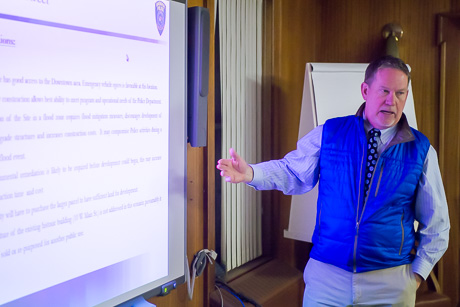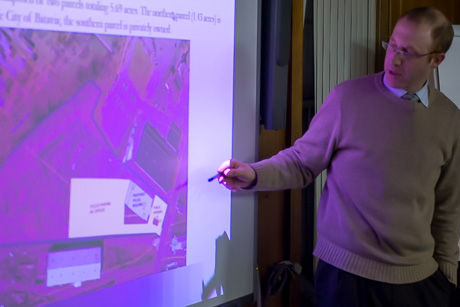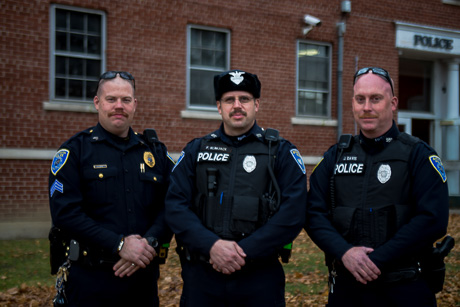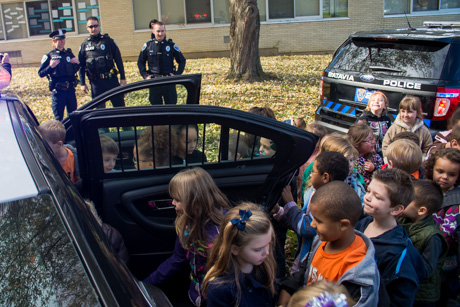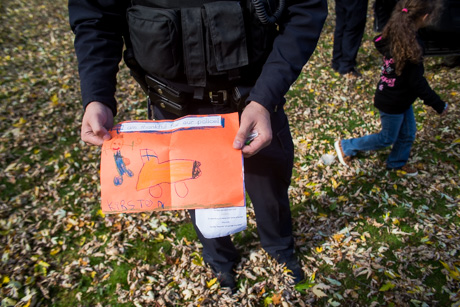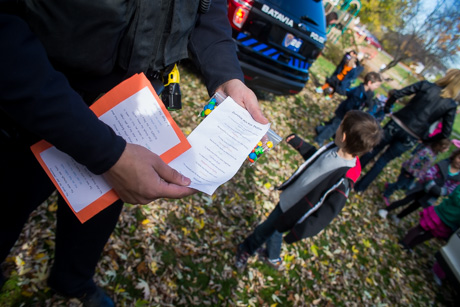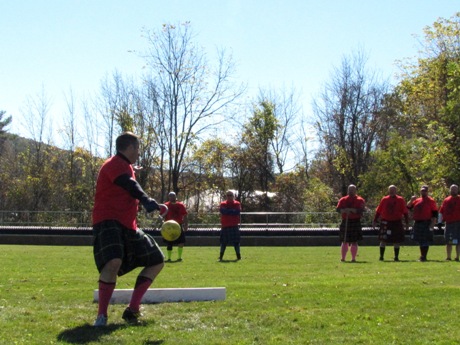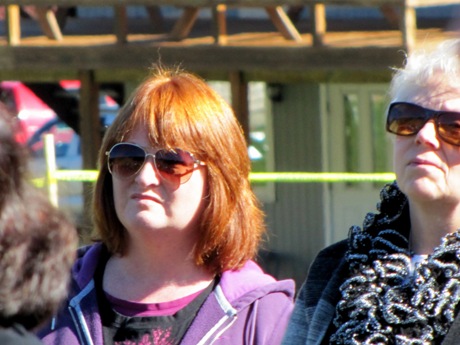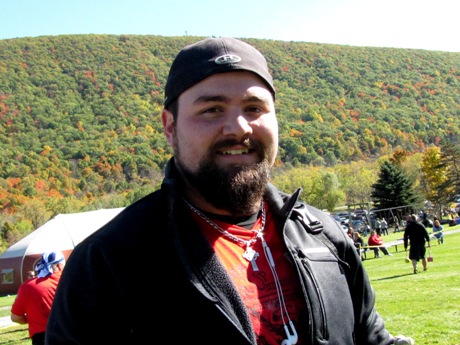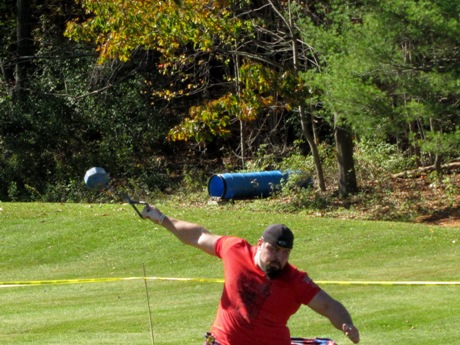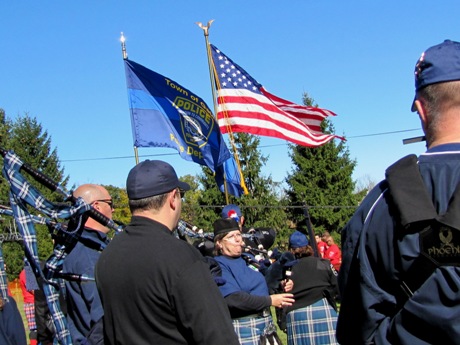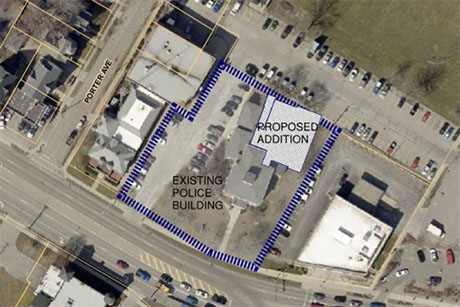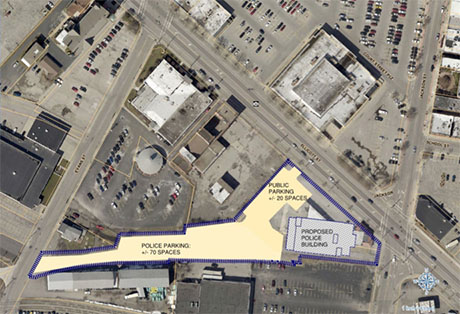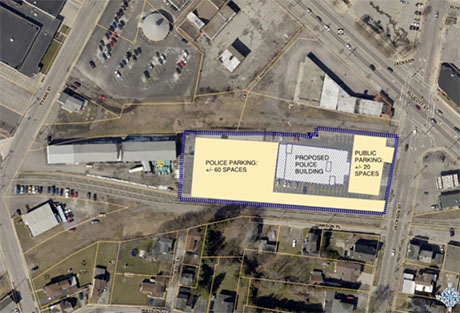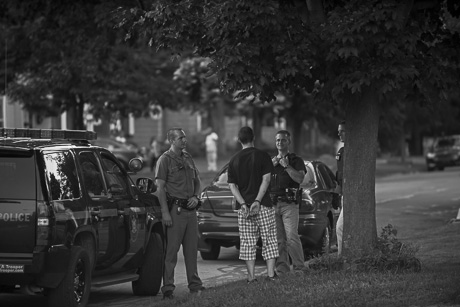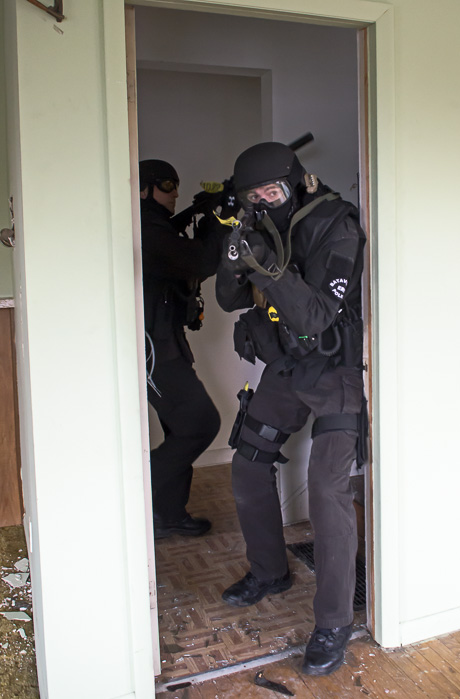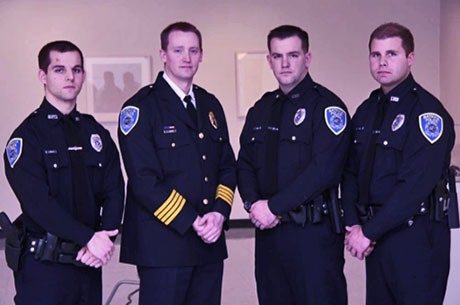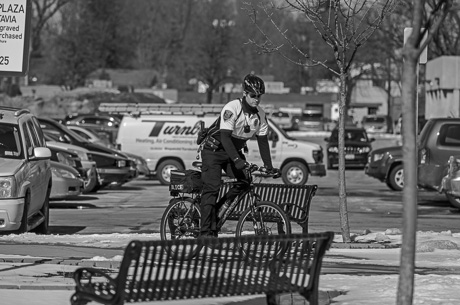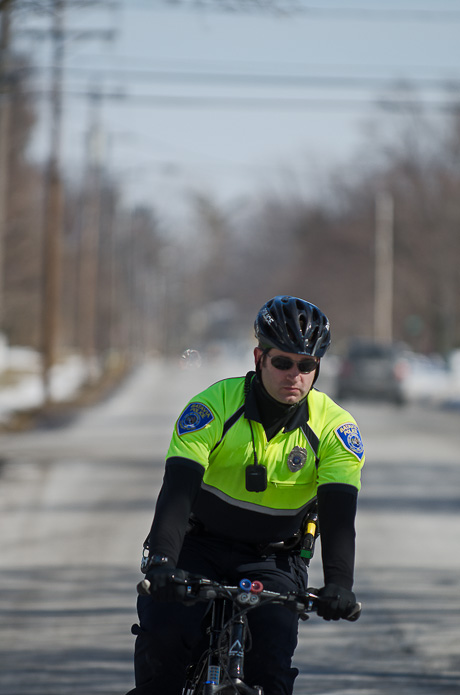If you're going to spend 36 years in law enforcement, you better enjoy it, and Chuck Dudek says he's enjoyed every minute.
The Batavia police detective retired this week and put a cap on a career that started with episodes of "Adam-12" and included making arrests for everything from false imprisonment to homicide.
"It was right up to two weeks ago before I actually decided I was going to retire," Dudek said."That was unbelievably difficult to do. It surprised me in a way. It was difficult to say, 'I'm retiring,' because I've really enjoyed this career."
Like many in law enforcement who grew up in the 1970s, Dudek first found inspiration in the television series Adam-12, the Jack Webb-created 30-minute drama that for seven years tracked the lives and careers of two Los Angeles police officers. The show was so realistic that some departments around the country used it as a training video.
Dudek thought it would sound strange to admit the show influenced him, but he said from a very young age, he wanted to be a cop.
Born and raised in Attica, Dudek attended Notre Dame High School and then got his degree in criminal justice at Genesee Community College. He interned with Attica PD and in 1978 he was given a badge and a gun and told to patrol on his own. It would be another year before he could attend the police academy in Niagara County.
"I was on the road and on my own within the first week or two," Dudek said. "We were one-man patrols, so I didn't have anybody to ask for help or advice. I would go home with my penal law book and my V&T book and ask myself, 'if this happens, what do I do,?' and I would have to look through the books. For the first year, I was self-taught."
Dudek tends to recall his career as a series of cases.
Two cases in Attica stand out in his mind.
During his first year, he was on patrol and doing a routine security check on Attica's former bowling alley. Dudek happened to catch the glimpse of a shadow of somebody inside the building. He called for back-up, but in Attica, back-up is often minutes or longer away.
By the time another officer arrived, the would-be burglar had slipped out of the building. Inside, the officers found tools, vending machines cut open and a safe that the perpetrator was trying to get open when Dudek spotted him.
The money was recovered -- left at the scene -- but the criminal was never captured.
"I had a pretty good solve rate in Attica, but that was one of the few that we never figured out who it was," Dudek said.
The second case came near the end of his stint with Attica, just months before he was hired by Batavia PD.
It's the closest Dudek came, he said, to losing his life while on duty.
One day in March, two young men, brothers, from Warsaw came into town and Dudek said they were looking for trouble. They tried to pick fights with pool players in a couple of local bars and then went to a local pizzeria and started hassling the owner. He called the cops.
When Dudek arrived, he asked the two men for their IDs and as he tried to reach for one, the other brother cold-cocked him, hitting him in the head. That started a scuffle that spilled out into the street with the three men rolling around on the ground. When Dudek managed to stand up, both men started hitting him and he fell face first to the sidewalk, unconscious.
By the time he woke up, the two brothers were at least 30 yards down the road and he was missing his metal flashlight.
He chased after them, joined by a civilian. As he approached, one of the men stopped, turned and started coming at him with the flashlight. Dudek pulled his service revolver and trained it on the assailant.
"That's the closest I ever came to shooting anybody," Dudek said. "I had my revolver with the hammer pulled back to single action. They stopped, thought about it, threw down the flashlight and started running."
They ran past the fire hall, where some volunteers were listening to the call on their scanner. An off-duty police officer was there and the two men were apprehended.
"One of them said to me, 'I should have split your head open with the flashlight when I had the chance,' " Dudek remembered. "That was a close call."
Dudek and his wife, Kathy, both attended Notre Dame, but the didn't get to really know each other until college. They both attended GCC and worked at Tops Market, and that's where a bit of romance blossomed.
They were married while Dudek was an officer in Attica and they settled in Batavia.
On July 4, 1982, Dudek patrolled the City of Batavia for the first time.
In his first year with Batavia PD, Dudek helped save the lives of a South Pearl Road family when he answered a phone line.
The young patrol officer was in the city's dispatch office, but the on-duty dispatcher was tied up on another call, so when the 9-1-1 line rang, Dudek answered.
He heard ... silence.
In those days, there was no caller ID. There was no way to identify the location of the call, but it took both parties to hang up to disconnect the call.
Dudek stayed on the line and listened for a few minutes to silence.
Then he thought he could hear labored breathing. Finally, a man's voice came on the line. He was weak, but he was able to give his address.
It was outside the city, so Dudek used the intercom system to contact Genesee County dispatchers.
The family had suffered carbon monoxide poisoning, but help got to them in the nick of time and they were saved.
"It felt good to be a piece in that chain that helped save them," Dudek said.
As a patrol officer, he also helped save a woman from an unknown, but surely horrible fate.
"In those days, if it was warm, I liked to patrol with the windows rolled down so I could hear things," Dudek said.
What he heard that early morning was a woman screaming.
He was in the shopping center just east of 400 Towers.
He found a man dragging a woman down the embankment near the 400 Towers' parking lot. He grabbed the man and the man said, "she's my girlfriend. She's just drunk."
The woman screamed, Dudek said, that she had never seen the man before in her life.
Dudek took the man into custody and back to the station for questioning. He was in fact a total stranger to the woman. He was charged with unlawful imprisonment and assault.
"I don't know what he had in mind for her, but it kind of makes you feel good when you're able to save somebody from something bad," Dudek said.
Working patrols in Attica for more than three years gave Dudek a taste for investigations. The department was too small to hire detectives, so the full-time patrol officers were akin to Malloy and Reed and Sherlock Holmes all rolled into one.
In 1988, there were two openings in the detective bureau and Dudek and Pat Corona (who also retired recently) both applied and both got the jobs.
Two years later, Dudek took a position with the Local Drug Enforcement Task Force, which gave him a unique position in the history of the police department. He was the first whose service weapon was an automatic rather than a revolver. He was issued a Smith & Wesson .45.
A short time later, the city spent enough money to get about half of the department's patrol officers automatic pistols. The second purchase came when a drug case that Dudek helped crack netted local law enforcement more than $100,000 in seized drug money. A portion of the money went to Batavia PD and the department outfitted the rest of the officers with automatic pistols.
Right after leaving the task force, Dudek picked up a case that at first seemed pretty routine.
A woman had moved back to Oakfield from Kentucky with her boyfriend. Shortly after returning, she came home and found her boyfriend molesting her 12-year-old daughter.
The crime itself was only chargeable as a misdemeanor, but Dudek decided to interview the suspect further.
He ended up confessing to a series of more serious sexual assaults in Bowling Green, Ky. Dudek turned the case over to detectives there and the man was charged with multiple felonies.
"It was a pretty interesting case," Dudek said. "I ended up getting called down to Bowling Green to testify. He got convicted and was sentenced to 125 years in prison."
Dudek's proudest moment as a detective, though, came in helping to solve the the murder of Desean Gooch.
Gooch was killed in 2006.
The day after the murder, Dudek found that insurance broker Mike Stasko had a video camera on the back of his office building off Dellinger Avenue.
The lens was partially covered by a spider web, the video quality was poor and it was shot at night, but it did show a sedan pulling up, four men getting out and going into an apartment. Soon after, the men run out and Gooch appears briefly, then they disappear. A second later, three of the men run from the apartment and try to get in the car, but it's locked and the driver hasn't arrived yet, so they run.
A copy of the video was sent to State Police investigators in Albany to see if they could enhance the quality. They couldn't.
Dudek contacted a guy who was a reported expert in something called "reverse projection," which was a technique used in other cases to help solve murders, but the process was expensive.
So while the DA's office and police department wrangled over how to pay for it, Dudek decided to see what he could do on his own.
Because one suspect was already in custody, police had the car and Dudek was able to use it to match against the video. He recorded it going to the same location and traveling the same path.
The suspect car, like the car in the video, had a busted fog light and one of the back-up lights was burned out. These were things not apparent in the video, except in the light patterns created.
Dudek, in speaking to a grand jury, was able to testify to a dozen matches between the seized suspect vehicle and the vehicle in the Stasko video.
"It's like a fingerprint," Dudek said. "You make the comparison and if you find seven or eight points that are the same and there's nothing different, that's a match."
The breakthrough helped lead to the arrest and conviction of Andrew Figgins for murder.
"I was named Officer of the Year by Kiwanis that year and I think it's mostly for that," Dudek said.
What will Dudek do in retirement? He's not sure yet. Travel at first. Keep biking (he rides at least a dozen miles four or five times a week) and read (favorite reading material is American history, but also some fiction -- like all of the Harry Potter books). He thinks he might like to be a private investigator or find a similar line of work.
"The most rewarding part of the job is being able to make a difference, to help people, to help victims," Dudek said. "That's what I'll miss besides the people I worked with. Being able to make a difference gives you a kind of purpose. That's something I've been very happy to do for 36 years."

